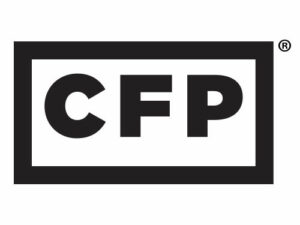By Bryan Trugman, CFPⓇ
On August 24th, 2022, only 7 days before the national student loan payment pause was set to expire, President Biden announced a plan to forgive student loans for borrowers who meet certain criteria. The news has sparked backlash, criticism, and outright anger from many on both sides of the fence, with some saying the forgiveness is a step too far, and others saying it’s not far enough.
No matter where you stand on this issue and no matter what your student loans look like, at Attitude Financial Advisors, we believe it’s important to keep our clients up to date and informed on the latest developments that could impact their finances. Here’s what you can expect from the student loan forgiveness program and how it could affect your long-term financial plan.
How Much Forgiveness Should You Expect?
The plan would provide up to $20,000 of debt forgiveness for students who receive a Pell Grant, and $10,000 of forgiveness for non-Pell Grant recipients. (1)
Pell Grants are offered to low-income and middle-income students based on financial need, and the amount awarded to students does not need to be paid back. According to the White House, approximately 60% of people who have federal student loans received Pell Grants. (2)
Requirements for Forgiveness
Borrowers are eligible for this relief if their individual income is less than $125,000 or $250,000 for households.
Private student loans are not eligible, only federal student loans. Of the $1.75 trillion of debt Americans have in student loans, roughly $1.62 trillion is from federal student loans while the remaining $131 billion comes from private loans. (3)
There is no age requirement, nor does the plan stipulate that the borrower must be the one who used the loan for college. That means that parents, or grandparents, who took out student loans for family members would be eligible for forgiveness, so long as they met the income requirements.
The plan also stipulates that the reprieve is only for those who took out loans prior to June 30th, 2022. Thus, no loans taken after that date would be eligible for forgiveness under this plan. It is currently unclear if there will be future loan forgiveness plans.
The Department of Education said that the application to apply for forgiveness will end on Dec. 31, 2023. To be notified of when the application opens to apply, you can sign up at the Department of Education subscription page.
Additional Student Loan Changes
The plan also made changes to the repayment of federal student loans, including:
- Lowering the percentage borrowers pay of their monthly discretionary income from 10% to 5% (only for undergraduate loans).
- Forgiving loan balances after 10 years of payments if the borrower has a balance of $12,000 or less.
- Paying for a borrower’s unpaid monthly interest. Some borrowers have paid their monthly payments but have seen their balances grow because of the interest. Now, as long as they make their payment, their balance will not grow.
Planning for Future College Expenses
Despite the $10,000 to $20,000 debt forgiveness coming to certain borrowers, it is still advisable to plan for other ways to pay for the cost of a college education. In 2021-2022, the average cost of an in-state public college was $10,388, while an out-of-state public college was 22,698. The average private college cost was $38,185. (4) The main takeaway is that even if there is more forgiveness, that alone won’t be able to cover the full cost of 4 years in college.
Two of the most popular ways to save for college are a 529 plan and the Coverdell Education Savings Account (ESA); each offers tax benefits and can be suitable for savers.
A 529 plan allows for borrowers to invest contributions into an account, invest it with tax-deferred growth, and withdraw the money tax-free as long as the money is used for a qualified education expense. Additionally, some states offer a tax deduction on contributions made to 529 plans.
The ESA contributions are not tax-deductible, but like a 529, your contributions grow tax-deferred, and distributions used for qualified education expenses are tax-free.
The ESA has a $2,000/year contribution limit, while there is no contribution limit for the 529 (although you do need to ensure you don’t exceed any gift tax limits, and if you do, you’ll need to report it on your tax return).
If You Qualify for Forgiveness
If you qualify and your new student loan balance will be fully paid off, this is a great time to take the next step in your financial life. Instead of immediately spending the money previously contributed to student loans, consider using that money to invest and build wealth. Depending on your goals and circumstances, you can contribute to your workplace retirement plan, an IRA, or a joint investment account.
If you qualify but the amount forgiven will lower but not eliminate your loans, there is still plenty of good news. Not only is your loan balance lower, but the amount of interest you pay each payment will decline, which will increase how quickly you can pay off your principal.
Also, as a result of your lower loan balance, your net worth will increase, which is a key indicator of your financial health. (5)
Your Forgiven Debt May Be Taxed by Your State
For those who do have student loan debt forgiven, you will not owe any taxes on the federal level on the amount forgiven. For instance, if you receive $10,000 in debt forgiveness, you will not have to include the forgiven amount in your taxable income on your federal tax return. Additionally, most states follow that rule when it comes to your state tax returns; thus, there won’t be an additional tax owed because you qualified for forgiveness.
However, that’s not the case in every state. Currently there are seven states where your forgiven amount would be included in your taxable income on the state level: North Carolina, Indiana, Mississippi, Arkansas, Minnesota, Wisconsin, and California. (6) While this reflects the law as it stands today, each of these states could change how forgiveness is taxed as they gather more information on the plan and make adjustments to their states law. If you have questions about the tax implications of student loan forgiveness in your state, please contact a financial professional to get the most up-to-date information.
Take the Next Step
Though the full details of the student loan program haven’t been released yet, there are concrete steps you can take to set yourself up for success and plan for future education costs in an efficient way. We at Attitude Financial Advisors can help you answer student loan questions, make the most of the forgiveness program, and keep you informed of any additional details as they become available.
To learn more about how we can help, take the next step by reaching out to me via email at btrugman@attitudefinancial.com or giving me a call at (516) 762-7603 to set up a consultation.
About Bryan
Bryan Trugman is managing partner, co-founder, and a CERTIFIED FINANCIAL PLANNER™ practitioner at Attitude Financial Advisors. With more than 14 years of experience, Bryan specializes in addressing the financial needs of new parents as they seek to realign their finances, assisting divorced individuals as they navigate an unforeseen fork in the road, and strategizing with those seeking to accrue a dependable retirement nest egg. Bryan is known for being a good listener and building strong relationships with his clients so he can help them develop a customized financial plan based on what’s important to them. He is passionate about helping his clients experience financial confidence so they can worry less and play more. Bryan has a bachelor’s degree in industrial and systems engineering with a minor in mathematics from State University of New York at Binghamton. He has served on the board of the Financial Planning Association and continues to be actively involved in the national organization. He is also a member of the Plainview-Old Bethpage Chamber of Commerce and has served as its vice president and as a board member. When he’s not working, you can find Bryan on the ballroom dance floor or engaged in a fast-paced game of doubles on the tennis court. To learn more about Bryan, connect with him on LinkedIn. Or, watch his latest webinar on: How Much Is Enough? A Surprisingly Simple Way to Calculate Your Retirement Savings Needs.
_________________
(1) https://studentaid.gov/debt-
(3) https://www.forbes.com/
(5) https://www.cnbc.com/select/
(6) https://www.npr.org/2022/09/09/1121717824/biden-student-loans-debt-cancellation-taxpayer-impact



